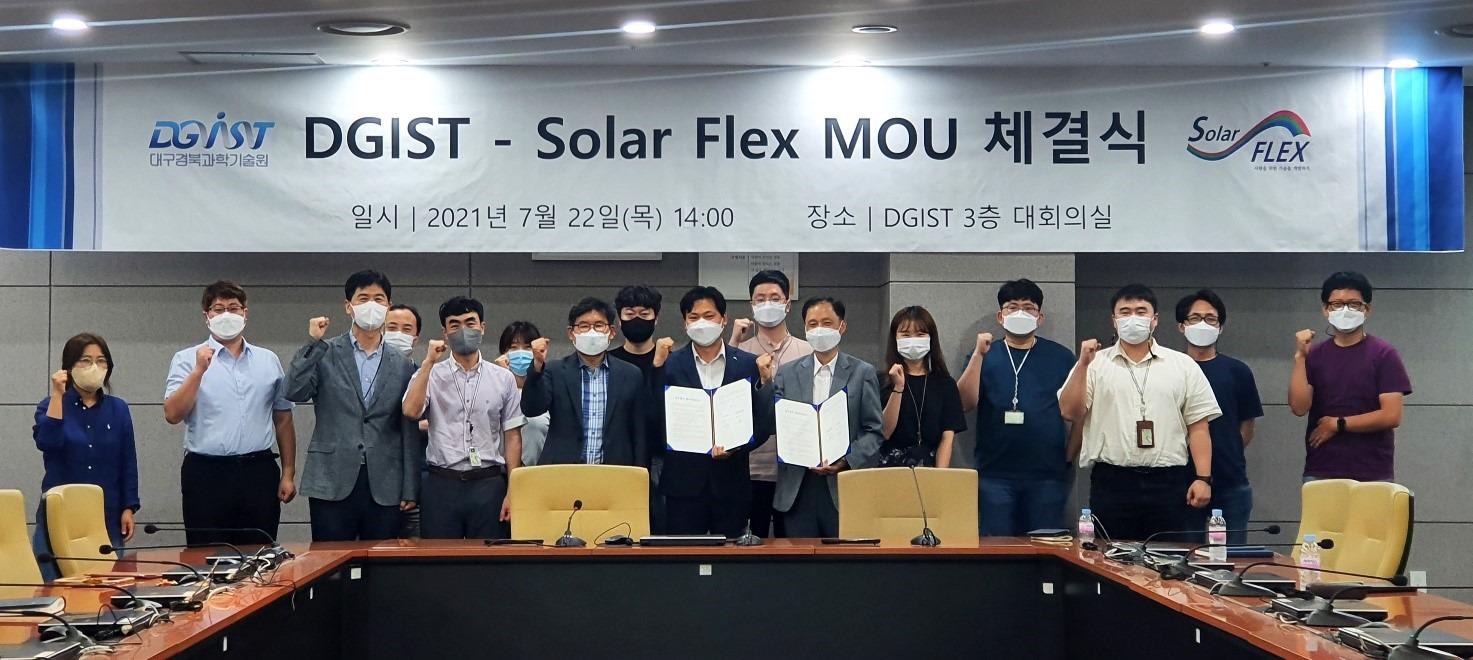The Research Center for Thin Film Solar Cell of the Daegu Gyeongbuk Institute of Science and Technology (DGIST) successfully achieved the world’s highest PCE of 12.2% for flexible CZTS thin-film solar cells.

Image Credit: Daegu Gyeongbuk Institute of Science and Technology.
The Center also declared the signing of a Memorandum of Understanding (MOU) with SolarFLEX for the commercialization of real technologies. The MOU is anticipated to ease the process of commercialization of the flexible solar cell technology.
CZTS thin-film solar cells are created using affordable and eco-friendly materials like brass (Cu-Zn) and bronze (Cu-Sn) as the base. This makes them highly beneficial for mass production compared to solar cells made of costly and rare elements like gallium and indium or perovskite solar cells consisting of lead, a heavy metal.
Therefore, the center has been performing continuous analysis of CZTS solar cells as well as CIGS solar cells, thus ensuring various original technologies with major implications.
From this perspective, Dr. Kee-Jeong Yang of the Research Center for Thin Film Solar Cell has come up with “a heteroatom doping optimization technology for the fabrication of high-quality flexible CZTS solar cells” and has published the study outcomes in the journal Advanced Functional Materials.
As an add-on to this notable achievement, the research team successfully set a new record for the world’s highest PCE for flexible CZTS solar cells.
In addition, the Research Center for Thin Film Solar Cell signed an MOU with SolarFLEX to commercialize such outstanding original technologies with the goal of close collaboration for commercializing the flexible solar cell technology.
The cooperation not only involves the partnership for the commercialization of the thin-film solar cell technology but also the collaborative study in relation to the development of original technologies, like tandem technology, for realizing a higher efficiency of the solar cells.
Through the MOU, the commercialization of flexible thin film solar cells made of general-purpose non-toxic materials will be materialized in the foreseeable future. These technologies derived by the joint research will practically facilitate the market release of the newly developed flexible CZTS solar modules that are cost-effective and easy to install.
Jin-Kyu Kang, Director of the Research Center for Thin Film Solar Cell, Daegu Gyeongbuk Institute of Science and Technology
Solar FLEX Co., Ltd. is a company that produces 10 MW class flexible CIGS thin-film solar cells and modules. With the MOU, the PCE of flexible CIGS thin-film solar cells will be additionally enhanced.
The process technology developed via the combined collaboration of affordable CZTS solar cell technology and next-generation tandem technology will ensure the availability of flexible CIGS thin-film solar cell modules that are lightweight, affordable and appropriate for application to the lightweight roof, thereby facilitating commercialization customized to the policy direction of K-RE100 and the Green New Deal.